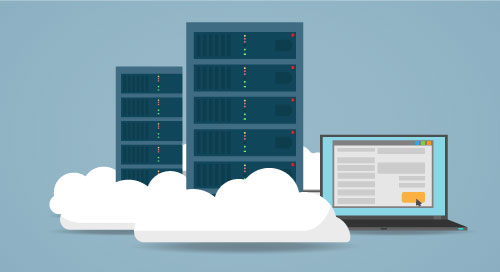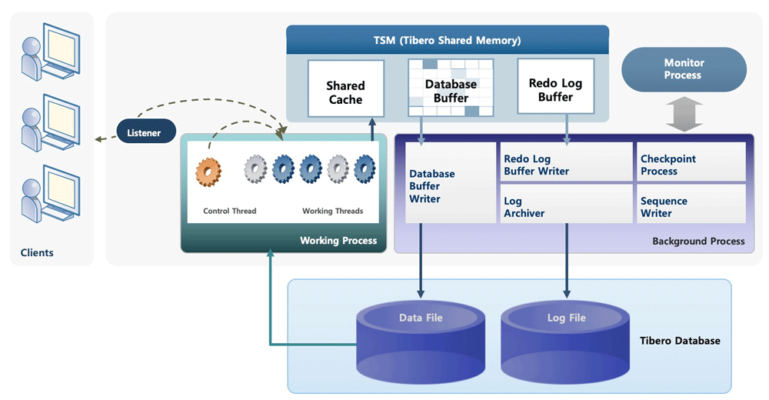Cut Data Center Costs with a Cloud-Native Database

Cloud-native technologies have revolutionized the data center, offering dramatic advantages in performance, resilience, and cost. But for many organizations, the path to a fully cloud-native, software-defined data center (SDDC) has been blocked by vendor lock-in.
This issue has been particularly pernicious for the relational database management system (RDBMS). Some popular databases are stuck in a pre-cloud mindset, making them inflexible and costly. But migrating away from these databases is tricky, because they are the foundation of mission-critical operations.
That’s why TmaxSoft, a provider of IT modernizations solutions, decided to create a new approach. Its cloud-native Tibero RDBMS was designed specifically to offer a smooth migration path by offering compatibility with legacy databases along with robust migration tools.
Whatever your legacy database, @TmaxSoft Tibero delivers the increased performance, reduced cost, and enhanced data resilience enterprises seek from a truly cloud-based virtual database.
The result is a dramatic increase in flexibility while cutting TCO. Indeed, organizations as diverse as Kia Motors, the Government of Gujarat, and Brazilian pension fund FUNCEF have already achieved up to 90% cost reduction in database licensing and maintenance year over year.
Time for a Cloud-Native Virtual Database Platform
To see how such results are possible, let us consider what is required of a truly virtual, cloud-native RDBMS. As with all cloud computing initiatives, it will be critical to migrate from a current database to this virtual one gradually and under complete control. This necessitates a hybrid capable of running on both enterprise premises and the cloud at the same time during the transition process.
There are a few other key requirements for development of such a platform:
- It needs to be highly compatible with popular databases to be a simple drop-in replacement for legacy systems.
- It needs to guarantee application compatibility without modification.
- Security needs to be as robust if not more so than the legacy systems being replaced.
- It needs to accommodate the large data lakes and data warehouses that many enterprises depend on.
- It needs to be multi-threaded to maximize performance.
- To take full advantage of cloud architecture, it should feature active clustering technology to optimize reliability.
- It should offer a substantially lower total cost of ownership (TCO) than legacy systems.
All in a Completely Open Platform
Setting it ahead of its competitors, Tibero from TmaxSoft is a database platform that meets all of these requirements (Figure 1). Designed to fully exploit all advantages of the cloud, Tibero also runs locally so enterprises can easily and gradually plan and migrate from one to the other without business disruption or major code changes.

Unlike competing platforms, Tibero is a fully open system. This makes it compatible with a wide variety of popular database utilities and middleware.
It also fits with the tools that IT and DevOps teams like to use for their greater agility and flexibility—both in development and deployment. This helps avoid undesirable vendor lock-in, which prevents enterprises from using software produced by anyone other than the database vendor. Not only does this reduce costs, it enables enterprises to benefit from the broad variety of open-systems software available to it.
In addition, Tibero allows IT teams to maintain control of data security by limiting access to specific individuals or roles, selectively allowing them to use only specific data within a database. Plus, Tibero provides excellent support for country-specific encryption algorithms—making it an ideal global solution.
Providing Stable RDBMS Service in the Cloud
To provide constant, consistent performance without downtime, even during component failures, Tibero relies on its exclusive “sharing-everything architecture”: Tibero Active Clustering (TAC).
Multiple instances of TAC take advantage of the basic nature of cloud computing as they combine their processing power to increase performance. Since database processing is clustered, operations continue even when a node fails thanks to seamless, instantaneous failover capabilities.
Failover capabilities are extended by Tibero Standby Cluster (TSC), which immediately uses “redo logs” to replicate the exact structure of the primary TAC cluster. In case of site failure, TSC takes over and continues delivering database services without interruption.
Since the performance of any RDBMS is directly impacted by the quality of the storage it uses, Tibero Active Storage (TAS) is the file system and volume manager that features a clustering function that directly uses TAC when using shared disk space. With two-way and three-way mirroring for superior data protection, TAS striping reduces I/O latency by load balancing across all disks.
To strengthen data protection, Tibero features a fully integrated Recovery Manager (RMGR) that provides full and incremental online backup with automatic recovery. Multi-node Parallel Recovery accelerates crash, instance, and media recovery by performing simultaneously on all nodes.
The Importance of Smooth Cloud Migration
Early cloud adopters were often confronted with errors and other challenges caused by trying to migrate to cloud too quickly and without sufficient planning. With Tibero, enterprises can operate databases both locally and in the cloud, enabling them to carefully plan and migrate gradually under full control.
Tibero also provides a complete set of fully integrated tools that enable easy and reliable migration. These tools, all part of the T-Up Suite, perform all required analysis, migration, and verification functions that comprise an effective transition. T-Up Analyzer is used prior to migration to assess the compatibility of various workloads, providing a comprehensive report defining the scope of the migration and indicating potential compatibility risks. T-Up Migrator simplifies and automates the creation of target objects and the transfer of data.
DBAs Embrace Tibero SysMaster DB
In addition to developers and operators, database administrators (DBA) appreciate the power and flexibility that Tibero delivers. Typically, DBAs manage multiple databases and prefer a single platform to monitor and manage all of them. With the Tibero SysMaster DB, DBAs can effectively manage the operation and configuration of users, schema, storage facilities, and servers. Multiple dashboards available in the platform enable them to visualize related information across databases. This is the preferred platform for real-time analysis in a single view.
Completely Compatible and Cloud-Ready
Tibero is cloud-delivered and features a simple licensing model similar to other Software-as-a-Service (SaaS) subscription services, eliminating the need for installation or configuration—making deployment fast and easy.
Whatever your legacy database, Tibero delivers the increased performance, reduced cost, and enhanced data resilience enterprises seek from a truly cloud-based virtual database. As a result, you can migrate with confidence and use Tibero with your preferred open-systems tools.